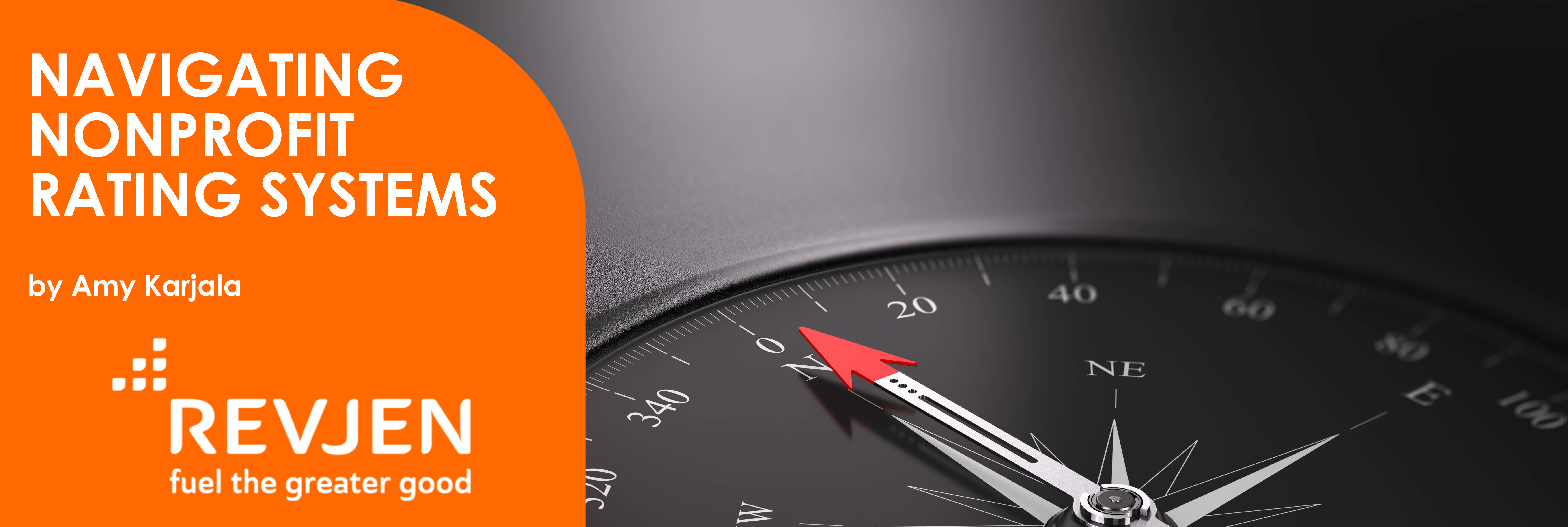
RevJen Blog
Posts about:
Blog


Q&A with RevJen’s Chief Revenue Officer on Recent Professional Development Training
We sat down with RevJen’s Chief Revenue Officer, Elizabeth Super, who completed a week-long professional development training through the Women’s Leadership Program...

Embracing Innovation: The Scientist Mindset
I’ve been around innovation as an idea for most of my career, most of the time by accident. The idea of a scientist mindset and changing the “way we do things...

Unveiling Resilience: Leading While Feeling Isolated
Still new to the nonprofit sector, I am increasingly finding that, in the expansive realm of it, leaders often confront a sense of isolation, a factor that hampers the growth and effectiveness of both individuals and organizations. The landscape in which nonprofit entities operate is fraught with challenges distinct from their profit-driven counterparts. In my work with leaders from many sectors across the globe, the feeling of it being “alone at the top” is common. However, it is felt much more profoundly in the nonprofit sector due to the mission focus and the lesser investment in professional development training and support for its leaders. However, I have a hypothesis that centers on the idea that this prevailing isolation can be nudged to a healthier place. I’ve seen it done in my own personal experience and through my experience coaching and supporting other leaders, through a profound understanding and bolstering of leadership resilience. So, what follows is my experience for you to take or leave or build on. Whichever suits your context. I’d love to hear from you.
Firstly, to definitions. Often, the essence of resilience lies in the capacity to bounce back from adversities, an indispensable trait for nonprofit leaders who often navigate through a sea of operational hurdles and limited resources. Research from the phycologists states that resilience isn’t a rare ability we luck upon or are born with; in fact, it can be honed and developed, with potential dividends in mitigating feelings of isolation and that irrepressible feeling of being burned out.
The Impact of Resilience
A study in the National Library of Medicine divulged that leaders with higher resilience levels tend to experience lower stress levels, thus positing resilience as a buffer against the solitude that often encircles leadership roles in nonprofits. In fact, the entire quality of life and overall scores were positively associated with higher resilience. Sounds great, doesn’t it?! Never that easy, of course. Data is contextual, and a bunch of those leaders have since felt times of resilience that is down. It isn’t a thing to conquer once and be done with it for life. It takes constant work (I know – you have enough of that, but I’m just being real!).
Resilience isn’t merely an individual ‘thing’ but extends its nasty energy-sapping tendrils into the organizational fabric, too. Which only adds to a leader’s workload, because you need to manage that, too. But there is value in managing it. A McKinsey study found that organizations that enable leaders to focus and build resilience see a 21 percent improvement in work effectiveness, a 46 percent improvement in employee engagement, and a 45 percent improvement in well-being. This enables these leaders to effectively handle the challenges encompassing financial pressures, workforce attrition, and donor engagement. This ripple effect of leadership resilience underscores its monumental impact not just on the leader but on the overarching organizational ecosystem.
Making it Personal
The pathway to cultivating resilience among nonprofit leaders isn’t a silver bullet. It is individual and contextual. There are lots of things we can do to help build our own resilience to overcome times of feeling isolated or burned out. However, networks of peer support is always going to help you lift out of it, regardless of the situation. Peers know what we are going through. They’ve been there, and they can share their experience to help us feel seen, understood, and optimistic. This is just like what our members get in their R-Squared groups.
A few exercises I’ve seen leaders try to build resilience is to focus on allowing the bodies machinery to do its thing. We often disguise the feeling of burnout as ‘fatigue’ or ‘busy-ness’, when in fact it’s actually a culmination of physical, emotional, and cognitive energy depletion that causes our resilience to drop. First, you need to identify what impacts your resilience capital. Have a coffee with yourself at the start and end of the week. No agenda. No devices. No paper. Just let the brain process and reflect. At the end of these 15mins or so, write down a few reflections of where your brain took you. You’ll soon see a trend of who are your resiliency vampires.
Next is to find what can reenergize you. When you’re having one of those days where everything feels good, you know the ones, when you can just keep going and everything is working out, and it feels like you’re winning. Take a moment and reflect on what has led up to that. Again, you’ll find threads over time that will enable you to build your resiliency action plan!
At the end of the day, nothing beats having peers who know what you’re feeling and what you’re facing. The most powerful parts of our nonprofit peer groups is hearing the relief of realization that hits leaders when they are suddenly no longer alone. There are others there waiting to meet your moments with support and advice and experiences to learn from. Find yours, and those headwinds may just start to turn.

Leading Through Burnout
Leadership is hard
Like, really hard. As leaders we take on the responsibility and accountability of the performance of our organizations and often do it in a way...

Navigating Nonprofit Ratings Systems
At RevJen we focus on some of the key challenges facing nonprofits. One of the biggest of those challenges is financial sustainability. The hamster wheel as it is...

The Power of Partnerships
The Power of Partnerships
Little Meanings.
There’s a story in everything, even the way we sign emails. I used to be that person that signs every email with...

The Case for Curious Leadership
The immense changes in our world over the last few years have changed so much about how we live and work. Not only physically, but the style in which we turn up to work every day has required a different approach. The people we serve have had their lives and communities nudged, and we are only just starting to see which of those changes are elastic and returning to previous norms and those which are remaining in their new form. One thing is for sure, leaders are having new and unique tests placed on them and some are adapting and learning quicker than others.
Post-Pandemic Leadership
We are currently in the midst of an existential leadership crisis due to three main forces:
- Firstly, as team members are looking to their leaders to show a greater understanding of their whole situation at home and at work, leaders are having any trust issues they have fundamentally tested. Without being able to look around the office, sit in meeting rooms, and “see” work happening, we can often end up awfulizing the situation and assuming the worst.
- Secondly, there is tremendous pressure on performance after many organizations struggled through the pandemic. When under pressure, we humans want to feel in control, and when we don’t get that feeling we feel stress. Stress is a wrecking ball on confidence, as evidenced by the fact that in a recent leadership study almost half of leaders who rated their transition to leadership as poor, also rated themselves as poor or below-average as a leader. To compound that, 58% of leaders said they did not receive any leadership training.
- Lastly, what the people we serve need and want to see in organizations has changed fundamentally. People have changed where they spend money, give money, and need money, which is requiring a new agility in organizations.
So, considering all of these human-related changes, a new trait found its way to the must-have leadership traits list in 2022: Curiosity.
Why Curiosity Matters
Curiosity is the art of asking great questions, recognizing bias, and falling in love with the evidence instead of the ideas. It stems from empathy and encompasses an ability to understand the situation others are in from their context, rather than your own. Without it, we fall into the trap of making assumptions, not understanding the people we serve properly, not testing our ideas properly, not understanding what our team needs, and ultimately creating an inwardly focused culture.
Although most say that they value curiosity, many often create a plethora of reasonable reasons to justify our return to a space lacking it. A need for speed, pressure for a result, a feeling of being unable to do anything other than ‘survive’ leads leaders to stifling creativity and curiosity instead.
The benefits of curiosity are clear.
Curiosity Boosts Creativity – A curious team will naturally be more creative as they have more options in front of them. Being curious to multiple ways of solving problems opens up solutions previously unseen. This isn’t exclusively for those in creative jobs. We all “create” in our work, and curious cultures boost agility and innovation in creative and non-creative jobs alike.
Curiosity reduces bad failure – If we remain curious and take a scientist mindset in our work (by always testing and looking for evidence to disprove our hypothesis), we are less likely to justify continuing with new work (or worse, not evolving existing work). This means that the right work gets focus and we are always adapting what we do.
Curiosity encourages better team dynamics – Teams who communicate with curiosity are less likely to fall into the class traps of ego, myopic KPI focus, hierarchical bias (those with fancier titles are ‘right’), and in general team communications. This reduces friction at work, makes it a better place to work, and reduces wasted time re-communicating misunderstandings.
Bias and Its Influences
“Be the leader you wish you had” – this is a common myth. Not everyone thrives under the same leadership style. There is a great old proverb “The same water that hardens the egg softens the potato”, and so too is that true in leadership. Great leaders lead each individual team member the way they want to be led. A lack of curiosity and a default to our conscious and unconscious biases will lead to this. Always test yourself and reflect, ‘am I being the leader I think is best, or am I being the one my team thinks is bringing the best out of them’?
Your Habits: Reflect and Become More Curious
Increasing curiosity in yourself and your team is all about habits. See what works for your rhythm and your personal style by reflecting on how you work and how you can introduce more curiosity into your own style. Start with the basics – ask more questions. Ask so many that you’re borderline annoying. Find your courage and ask your team how they want you to lead them and build different styles and rhythms for each team member, rather than a cookie-cutter leadership approach.
Demonstrate your own curiosity constantly. The more you do it, the more your team will feel comfortable implementing it in their own behaviors.
Ensure that you deeply understand the types of bias that exists and constantly reflect on whether they are present in you and your team’s daily habits. Below is a list to get you started, although it isn’t exhaustive.

Purposeful Measurement and Evaluation
One of RevJen’s core themes is that work of purpose should be done with purpose, on purpose. This focus on being deliberate and intentional is woven throughout RevJen program offerings.